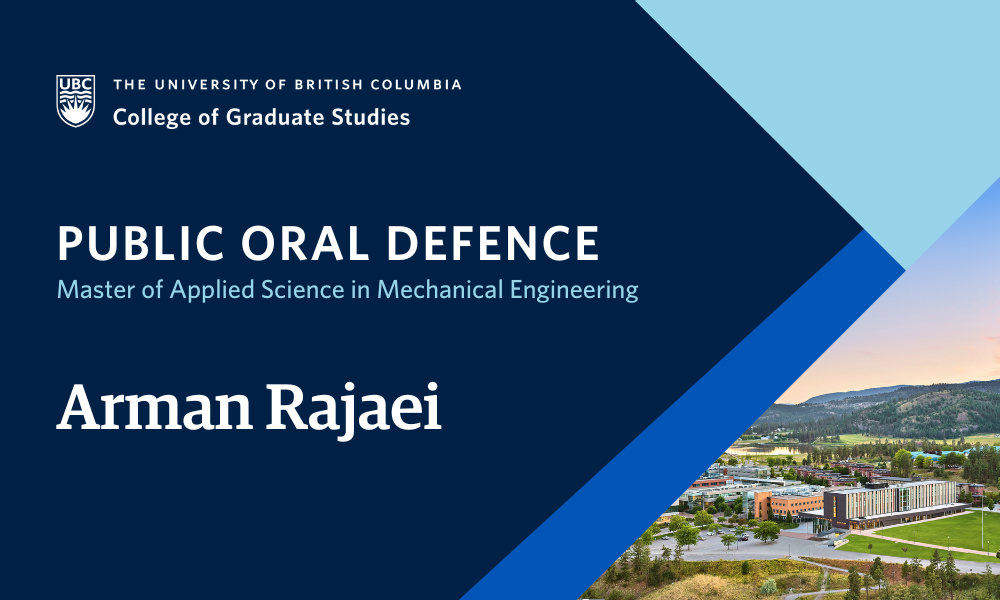
- This event has passed.
Thesis Defence: Enhanced Biological Signal Processing: Integrating Advanced Frequency Analysis and Wavelet Techniques for Action Potential Detection in Rats’ Sympathetic Nerve Recordings
April 8 at 9:30 am - 1:30 pm

Arman Rajaei, supervised by Dr. Rudolf Seethaler, will defend their thesis titled “Enhanced Biological Signal Processing: Integrating Advanced Frequency Analysis and Wavelet Techniques for Action Potential Detection in Rats’ Sympathetic Nerve Recordings” in partial fulfillment of the requirements for the degree of Master of Applied Science in Mechanical Engineering.
An abstract for Arman Rajaei’s thesis is included below.
Defences are open to all members of the campus community as well as the general public. Please email rudolf.seethaler@ubc.ca to receive the Zoom link for this defence.
ABSTRACT
This thesis explores the analysis of neuronal action potentials (AP) within sympathetic nerve activity (SNA) from rats’ splanchnic nerves. Chosen for their physiological resemblance to humans, rats serve as a viable model for this research. We introduce an advanced AP detection algorithm employing wavelet transforms (WT), addressing limitations observed in previous methodologies.
A primary focus is the identification of the noise floor in the recorded data, a pivotal step for distinguishing neural activity from background noise. Our novel method integrates pharmacological interventions to induce ganglionic blockades, leading to the significant reduction or elimination of APs. By comparing pre- and post-blockade recordings, we establish a baseline threshold, enhancing our capability to identify true neural signals.
Furthermore, we address the selection of the appropriate level of decomposition in multiresolution analysis. Unlike the empirical selection process that previous researchers, such as Diedrich et al. (2003), our strategy incorporates frequency and spectrum analysis of APs, guiding the choice of decomposition level. Additionally, we shift from the conventional discrete wavelet transform (DWT) to the maximal overlap discrete wavelet transform (MODWT), improving time resolution analysis.
In the next step, we constructed a mother wavelet from the average of extracted APs for use in continuous wavelet transform (CWT). This approach likely yields more AP extractions compared to using predefined wavelets from the Symlet and Daubechies families. While Salmanpour et al. (2010) also developed their own mother wavelet, it was based on an average shape derived from time-binned APs extracted using the DWT, which contrasts with our template created from a larger number of APs. Consequently, our template may offer enhanced reliability over theirs.
By iterating this process with the APs extracted from CWT, we refine our template, enabling its adaptation as a mother wavelet and aiding in the accurate determination of the shape and length of rat APs. Although Shafer et al., (2022) also refined their template, they initiated it from large APs, potentially introducing a bias towards larger spikes in their analysis. Additionally, through burst analysis and the examination of AP synchronicity within bursts, we aim to validate our AP identification approach by demonstrating the correlation between APs and burst intervals.